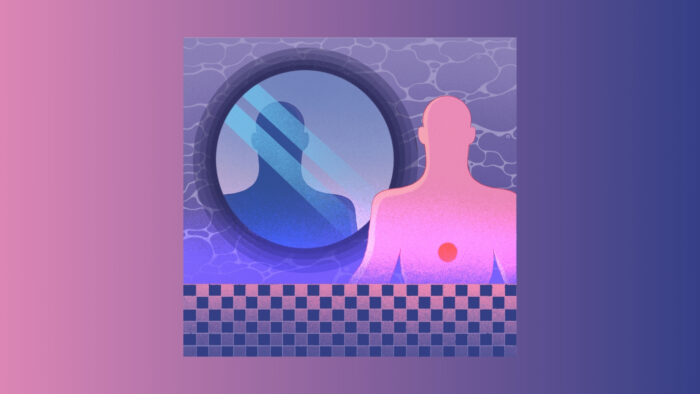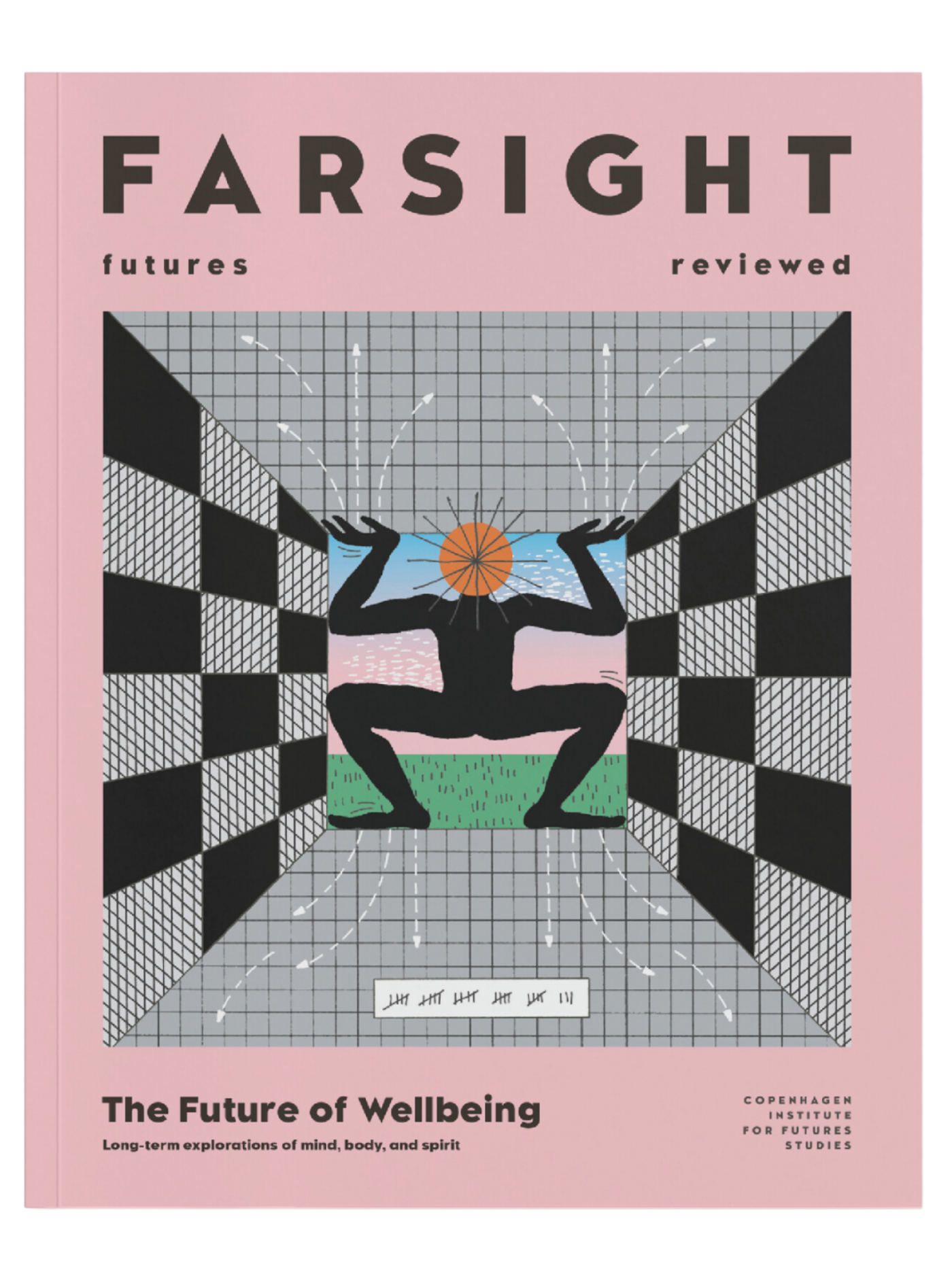
In turn, we use cookies to measure and obtain statistical data about the navigation of the users. You can configure and accept the use of the cookies, and modify your consent options, at any time.

Scientific breakthroughs in mental health are pushing our understanding of the mind-body connection and the brain’s intricacies.
Illustration: Sophia Prieto
Some say we only appreciate things once we lose them. The repercussions of social isolation during the Covid-19 pandemic underscored how easily we take mental health for granted, as well as how integral it is to our overall wellbeing. The last few years may have brought this realisation to the forefront, but the mental health crisis predates Covid-19, persisting as a ‘hidden pandemic’.
Based on the Global Burden of Disease (GBD) study from 2019, mental disorders account for more disability than any other type of disease, except musculoskeletal disorders (which include arthritis and back pain). On average, for every twenty years lived in disability, around three are due to mental conditions. This surpasses the combined impact of diabetes, cardiovascular diseases, and chronic respiratory conditions. Within mental conditions, depressive disorders stand out, causing more years of disability than any other disorder – whether physical or mental – except for back pain. And while mental conditions may not be a direct cause of death, they can drastically diminish people’s quality of life and increase the risk of additional conditions, some of which may eventually be lethal. But if mental health is such a significant public health concern, why isn’t more being done to address it?

Broaden your horizons with a Futures Membership. Stay updated on key trends and developments through receiving quarterly issues of FARSIGHT, live Futures Seminars with futurists, training, and discounts on our courses.
become a futures memberThe key to answering this question is multifaceted. Part of the explanation has to do with the complex, multidimensional nature of mental health, as well as the way in which mental conditions are currently diagnosed and treated. Stigma, rooted in misunderstanding, is also a major obstacle in tackling the mental health crisis despite recent efforts to address it.
What leads to mental conditions, or even thinking about mental health, being stigmatised? Certainly, the common misconception that someone chooses to feel a certain way instead of ‘getting over it’ is a contributing factor. So is the opposite belief that mental conditions are an intrinsic part of the individual that expresses it, which often leads to them being labelled as ‘weak’ or ‘helpless’. Lack of understanding also leads to some people fearing those with a mental condition by perceiving them as erratic and unpredictable.
The common theme that unites these views is a lack of understanding of what causes mental conditions. Mental health is a highly complex, multidimensional issue, which helps explain why deeply rooted cultural, philosophical, and theological interpretations sometimes win out over scientific explanations that may seem more inaccessible to the average person.
This is nothing new. Due to their abstract nature, mental phenomena have been subject to mystical and spiritual interpretations for millennia. This includes S their separation from the physical body and encapsulation in concepts such as ‘mind’ and ‘soul’. Philosophers have a term for this concept: mind-body dualism. With proponents such as the 17th century thinker René Descartes, it posits that the mind is separate from the biological substrate that underpins it.
Although this dualism has greatly shaped our perception of mental health, it wasn’t always taken for granted. Some early civilisations, although distinguishing the mind from the body, believed the two were inextricably linked. The Roman poet Juvenal, for instance, wrote of a “mens sana in corpore sano,” or “a healthy mind in a healthy body.”
Attempts to pinpoint the exact location of the mind aren’t precisely limited to recent times either. Some, including the ancient Greek physicians Galen and Alcmaeon, already suspected the brain to be its source, while Aristotle pointed to the heart, a romantic interpretation shared with Chinese philosophy, as the Chinese word (xīn) can mean both heart and mind.
Despite these efforts, the lack of a strong scientific foundation meant that mental processes were not fully ‘grounded’ within the physical realm, and the mind was seen as immaterial and intangible, a cloud of sorts floating above people’s heads. This shrouded the mind in mystery, allowing alternative interpretations to compete with attempts at a more scientific understanding.
The late 19th century saw the beginning of the slow process of demystification of the physiological link between mental states and the brain. Among the early breakthroughs were the neuron theory, put forth by Santiago Ramón y Cajal, and the discovery of neurotransmitters – chemicals through which neurons communicate. Technologies to measure brain activity were also developed, which gave researchers the tools to investigate the physical manifestations of mental phenomena.
Modern neurology and psychiatry emerged during this time – with some occasional crossovers – as distinct disciplines, although very much following the dualist paradigm of body and mind. Neurology would go on to address more ‘physical’ conditions such as Alzheimer’s and Parkinson’s disease, epilepsy, and multiple sclerosis, while psychiatry would take on the more ‘mental’ afflictions like anxiety disorders, psychotic disorders such as schizophrenia, and neurodevelopmental disorders such as autism.
This divide happened for a variety of reasons. The first is that, even by the 19th century, our biological understanding was not sufficiently developed to realise how much in common neurological and psychiatric disorders have, and as a result the fields formed independently.
Second is the nature of psychiatric conditions, which are highly complex and more easily diagnosed through behavioural and cognitive signs than through physical manifestations. What’s more, it is often not the symptoms themselves – such as irritability, sadness, fear, and agitation – that are pathological, but rather how intensely they manifest. As a result, in the absence of a more reliable (or even viable) method, questionnaires such as the ones found in the Fifth Edition of the Diagnostic and Statistical Manual of Mental Disorders (or DSM-5) remain the gold standard for diagnosing and measuring psychiatric conditions.
In contrast, many neurological conditions have clearly defined pathologies. For example, multiple sclerosis results from the immune system mistakenly attacking the protective layer that surrounds the nerves. Consequently, the symptoms of neurological conditions, such as loss of motor function or control, memory loss, seizures, or headaches, clearly hint at disruption in brain physiology and can often be detected through various diagnostic methods.
The division between neurology and psychiatry creates some awkward situations. For example, while Parkinson’s and Alzheimer’s disease are categorised as neurological conditions, the dementia resulting from PD and AD falls within the boundaries of psychiatry. The distinction between comorbid psychiatric conditions themselves based on the DSM-5 is not that clear either. For example, cases of both bipolar disorder and schizophrenia are often observed in the same family, clearly suggesting a shared genetic component in these conditions.
More recently, researchers have been shedding light on the biological underpinnings of mental conditions. As a result, the artificial wall between neurology and psychiatry – which scientific advances have demonstrated is arbitrary and counterproductive – is slowly being broken down. Increasingly, scientists are calling for a “conjoined effort of neurologists and psychiatrists” in the drive to understand how “a disease of the brain results in an illness of the mind,” as Joseph B. Martin, Professor Emeritus of Neurobiology at Harvard University has put it.
The history of depression treatment is a classic example of why such a conjoined effort is needed. In the late 20th century, depression was linked to a ‘chemical imbalance’ in the neurotransmitter serotonin. Consequently, various drugs – antidepressants – were developed that stop the chemical from being reabsorbed by neurons.
But newer research paints a more nuanced picture. Depression is now believed to be the result of long-lasting changes in the brain’s neuronal connections through a property known as neuroplasticity. Depression has been found to be associated with loss of neuronal connections in the hippocampus (a brain structure responsible for learning and memory), a process which, it turns out, antidepressants work to reverse.
Neuroplasticity is a key piece to solving the puzzle of mental health and illness. It explains how our experiences, genetics, and environmental factors collectively cause changes to our brain and, consequently, why dealing with mental conditions is not just about ‘flipping a switch’. But it also means that the brain can be rewired through specialised techniques – such as mindfulness and cognitive behavioural therapy.
Importantly, scientists are also addressing the somewhat arbitrary divides created by symptom-based diagnoses. One such initiative is underway at the Max Planck Institute of Psychiatry, where an ongoing study seeks to collect a wide range of data – from the genetic and molecular to the neurocognitive and psychophysiological – from a thousand subjects with psychiatric conditions to explore more objective measures of diagnosis.

Explore the world of tomorrow with handpicked articles by signing up to our monthly newsletter.
sign up hereThe implications of developments such as this are immense. Understanding the biological nature and profiles of mental conditions can allow for earlier, more accurate, and more tailored diagnosis and treatment than current trial-and-error approaches can. Importantly, it makes illnesses tangible, allowing both individuals and society at large to see them as an existing problem that can be addressed.
With this new understanding of mental health, it would be tempting to develop a brain-focused perspective. Although this point of view has advantages, it also comes with the risk of following a narrow approach with an overly clinical mindset.
Instead, this biological understanding of mental conditions should be nested in the broader behavioural, societal, and cultural context in which mental health unfolds. One can acknowledge the physical underpinnings of the mind while being aware of how it extends beyond the confines of the brain in a complex, invisible mesh of experiences, behaviours, relationships, and culture.
Mental conditions are simply too complex for silver bullet solutions to ever be viable. We may compare them to the Gordian Knot, which, according to legend, was impossible to untie. And although Alexander the Great solved the issue by slashing it with a sword, human beings are not knots. We need to approach mental conditions skilfully and accurately, only using pharmaceutical treatment when appropriate to loosen the knot and create opportunities for non-pharmaceutical interventions such as psychotherapy to produce long-lasting improvement.
Unfortunately, access to such treatments remains a critical issue, as does that fact that mental conditions are often addressed through drugs alone when it is too late for preventive or less drastic measures to be effective. This, combined with unprecise or even inaccurate diagnoses severely undermines current efforts, with many treatments having low rates of success.
So, what lies ahead?
While there remains a lot of ground to cover, we can already see glimpses of the opportunities a more holistic approach to mental health could bring, as well as some risks and challenges to keep in mind.
Importantly, today’s scientific breakthroughs may lead to further demystification of mental conditions in broader society and a push to start viewing them as a real and tangible problem. At the same time, we should be aware of the risk of ostracising individuals, for example in a social or professional context, based on this new knowledge.
Understanding the brain as embedded, figuratively, in the wider life experiences and societal structures that individuals inhabit may give us the most high-resolution picture possible and support individuals’ mental wellbeing more effectively. Doing so, however, will require radically improving access to interventions beyond medication.
Technologies such as telehealth, mental health apps, and wearables – while not a panacea – may help us approach this goal, as will fostering prevention and providing new ways to detect mental conditions early, which may be redefined based on biological signatures rather than symptoms alone.
Crucially, promoting mental wellbeing is also about acknowledgment. As the famous wizard Albus Dumbledore once put it: “of course it is happening inside your head, but why on Earth should that mean that it is not real?”

Stay up-to-date with the latest issue of FARSIGHT
Become a Futures Member